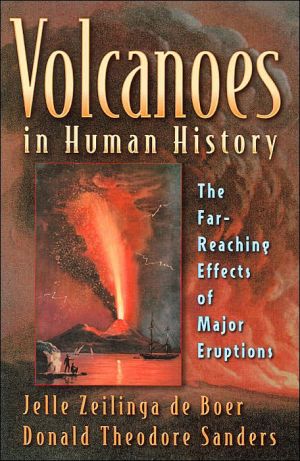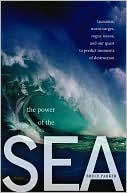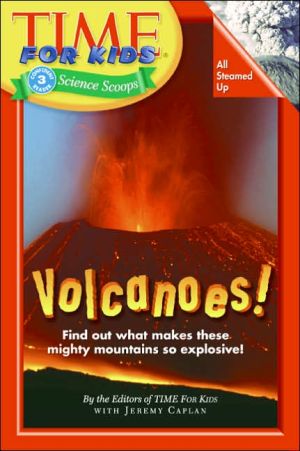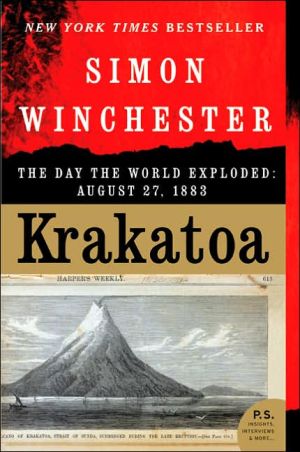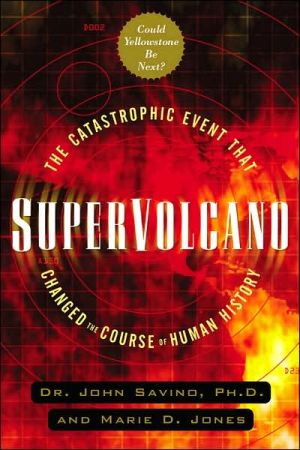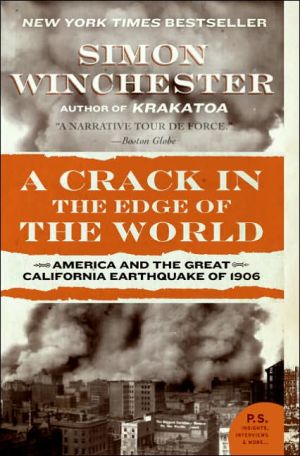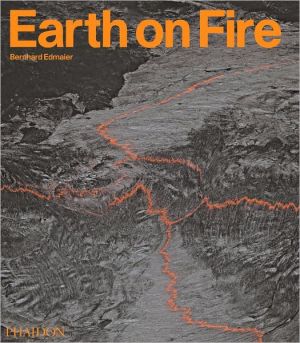Volcanoes in Human History: The Far-Reaching Effects of Major Eruptions
When the volcano Tambora erupted in Indonesia in 1815, as many as 100,000 people perished as a result of the blast and an ensuing famine caused by the destruction of rice fields on Sumbawa and neighboring islands. Gases and dust particles ejected into the atmosphere changed weather patterns around the world, resulting in the infamous ''year without a summer'' in North America, food riots in Europe, and a widespread cholera epidemic. And the gloomy weather inspired Mary Shelley to write the...
Search in google:
"Most people seldom think about volcanoes or the role they have played in human history. Jelle Zeilinga de Boer and Donald Theodore Sanders . . . examine the relationship between volcanoes and human history. . . . [Their] chilling examples show the profound impact volcanic eruptions have had upon humans. The incredible story has taken centuries to unfold and will surely continue to evolve."—Dr. Robert D. Ballard, President, Institute for Exploration, Mystic, Connecticut"There is a growing awareness of the interplay between natural disasters and human societies, putting this book at the cutting edge of an important trend. It integrates science with societal issues in a way that is compelling and interesting. With its informative but nontechnical style, it should appeal to both scientists and nonspecialists."—Susan Hough, U.S. Geological Survey Christian Science Monitor - Robert C. Cowen In all, the authors present 11 volcanoes to explain what it means to live with volcanic hazards. It's easy to look back and say fewer people would have chosen to live in such risky places if they had know what was involved. But that's cold comfort. Our crowded planet now offers many at-risk populations little alternative - as in the case of Naples. We have to make the most of our scientific understanding to deal with hazards that people cannot avoid. We should love our life- sustaining planet, risks and all, for we certainly can't leave it. This book will help interested readers understand some of its foibles.
Foreword1Volcanism : origins and consequences1Sidebar : dating of volcanic events2The Hawaaiian islands and the legacy of Pele the fire goddess223The Bronze Age eruption of Thera : destroyer of Atlantis and Minoan Crete?474The eruption of Vesuvius in 79 C.E. : cultural reverberations through the ages745Iceland : coming apart at the seams1086The eruption of Tambora in 1815 and "the year without a summer"138Sidebar : Mount Toba : bigger than Tambora7Krakatau, 1883 : devastation, death, and ecologic revival157Sidebar : the ghosts of Merapi8The 1902 eruption of Mount Pelee : a geological catastrophe with political overtones186Sidebar : Mount Pelee and the Panama Canal9Tristan da Cunha in 1961 : exile to the twentieth century20910Mount St. Helens in 1980 : catastrophe in the Cascades228
\ Isis - Sally Newcomb\ Does the world need another book about volcanic eruptions and the havoc they wreak? The answer, for this book, is an emphatic 'yes,' especially for the general reader. [B]esides being interesting to read, Volcanoes in Human History clearly demonstrates that volcanism, and geology as a whole, should not be of concern only to geologists and that history is important.\ \ \ \ \ IsisDoes the world need another book about volcanic eruptions and the havoc they wreak? The answer, for this book, is an emphatic 'yes,' especially for the general reader. [B]esides being interesting to read, Volcanoes in Human History clearly demonstrates that volcanism, and geology as a whole, should not be of concern only to geologists and that history is important.\ — Sally Newcomb\ \ \ In clear prose aimed to include general readers, the authors make the case for the social consequences set in motion by large volcanic eruptions as both wide-ranging and long-lived.\ \ \ \ \ A detailed and vivid account of the fiery relationship between the Earth and its surface dwellers.\ \ \ \ \ Does the world need another book about volcanic eruptions and the havoc they wreak? The answer, for this book, is an emphatic 'yes,' especially for the general reader. [B]esides being interesting to read, Volcanoes in Human History clearly demonstrates that volcanism, and geology as a whole, should not be of concern only to geologists and that history is important.\ — Sally Newcomb\ \ \ \ \ In all, the authors present 11 volcanoes to explain what it means to live with volcanic hazards. It's easy to look back and say fewer people would have chosen to live in such risky places if they had know what was involved. But that's cold comfort. Our crowded planet now offers many at-risk populations little alternative - as in the case of Naples. We have to make the most of our scientific understanding to deal with hazards that people cannot avoid. We should love our life- sustaining planet, risks and all, for we certainly can't leave it. This book will help interested readers understand some of its foibles.\ — Christian Science Monitor\ \ \ \ \ The authors explore the far-reaching effects of nine major eruptions: the Hawaiian Islands, the Bronze Age eruption of Thera north of Crete, Vesuvius in 79 C.E., Iceland, Tambora, Indonesia in 1815, Krakatau in 1883, Mt. Pelee, Martinique in 1902, Tristan de Cunha in the South Atlantic Ocean in 1961, and Mount St. Helens in 1980. Graphic descriptions of the eruptions are accompanied by maps, photos, and illustrations. What makes this more than just a fine book about volcanoes is the attention the authors give to the cultural impact of each disaster. The gases and dust from Tambora's eruption, for example, led to "the year without a summer" in North America. Weather patterns changed, bringing snow in June, July, and August; people and livestock died from starvation; crop failures let to faster migration out of New England to Ohio and the West. Other eruptions brought similar consequences, including disease, famine and death to hundreds of thousands worldwide. The dreary atmosphere even inspired Mary Shelley to write Frankenstein. This is a readable study of geological disasters and the cultural changes that follow. KLIATT Codes: JSA—Recommended for junior and senior high school students, advanced students, and adults. 2002, Princeton Univ. Press, 295p. illus. maps. notes. bibliog. index., Ages 12 to adult. \ —Janet Julian\ \ \ \ \ After an introductory chapter on volcanism, this volume by geologists Zeilinga de Boer and Sanders shifts its focus to particular volcanic events (e.g., Vesuvius, Mt. Pel e, Krakatau) and areas of volcanic activity (e.g., the Hawaiian Islands and Iceland). The events themselves are described, but the emphasis is on the long-term effects of volcanic activity. The authors make it clear that those effects extend beyond the location of the volcano; there are widespread repercussions that influence everything from literature and religion to population migrations and global weather patterns. The authors have applied their geologic knowledge and experience, along with solid research, to produce an accessible book on volcanoes. It is more readable than either Alwyn Scarth's Vulcan's Fury (LJ 9/1/99) or Haraldur Sigurdsson's Melting the Earth (LJ 5/1/99), both of which are referenced. The authors also make good use of historical sources, such as Charles Morris's Volcano's Deadly Work (1902) and Edward Bulwer-Lytton's Last Days of Pompeii (1834). Recommended for academic and larger public libraries. Jean E. Crampon, Science & Engineering Lib., Univ. of Southern California, Los Angeles Copyright 2001 Cahners Business Information.\ \
